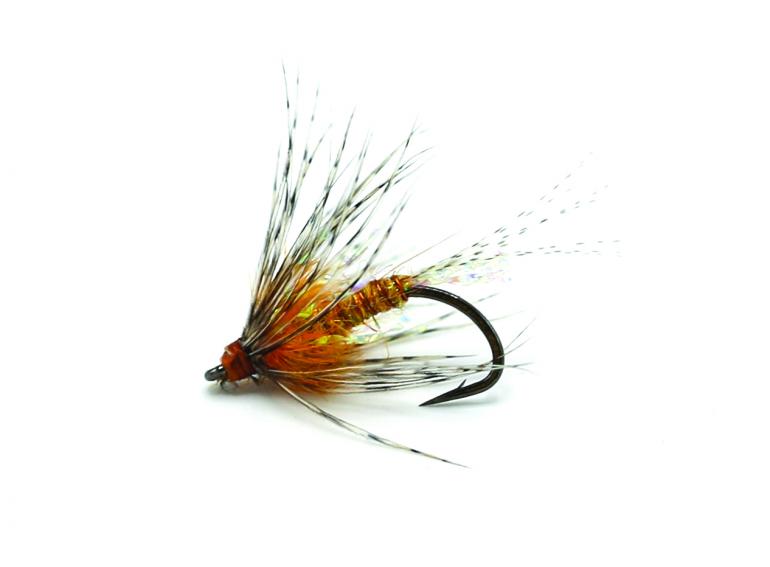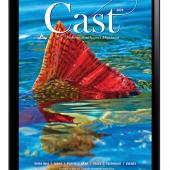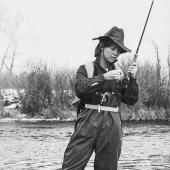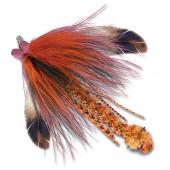The Not-So-Secret Weapon
Tying the Shakey Bealy.
As the rising sun crests the mountains, anticipation sets in. Cool, crisp air fills your nostrils as you rig your rod, taking added caution to ensure that every knot is flawless. It’s fall in Yellowstone Park, a time when a mistake might rob you of the fish of a lifetime. You’re in the realm of massive, malicious, mammoth brown trout. Better have a fly you can trust.
The Shakey Bealy is a legendary October caddis soft hackle. It has been the kryptonite to many of the behemoth Hebgen browns that move into the Madison in the fall. Dead-drifted as point fly under an indicator, swung as part of a double soft-hackle rig, or fished behind your favorite streamer, this fly just plain catches fish. It’s the epitome of “just add water.” Tie a few up—the trout will regret that you did!
Materials
1. Hopper hook or slightly bent stimulator hook, sizes 12 or 14
2. Rusty brown, 10/0 Veevus
3. Amber orange Krystal Flash
4. Mallard flank feather, dyed wood duck
5. Rusty brown tying thread, 3/0 or 210-denier
6. Golden Stone Australian possum dubbing or similar
7. Orange ostrich herl
8. Natural Hungarian partridge
9. 10/0 Veevus rusty fly-tying thread or similar
Instructions
1. Start your tying thread at the eye of the hook and create a thread base down to the bend of the hook.
2. Tie in six strands of the Krystal Flash. Wrap the flash all the way down the hook to build profile into the fly. Clip the flash to about the length of the hook gap.
3. Tie in 8-10 fibers from a mallard flank. The fibers should extend 2.5 times the length of the tail.
4. Tie in a piece of the rusty brown tying thread along the length of the hook; this will become the rib of the fly. Apply dubbing wax to the thread and build a slightly tapered dubbing rope on the thread.
5. Wrap the dubbing up the hook, building a slight cigar shape to the body. Build the taper 3/4 of the way up the hook. Rib the body with the 210 denier rusty brown thread, taking care to build even segments all the way up to the eye of the hook.
6. Tie off the ribbing at the eye of the hook. Tie in the ostrich herl and take 4-6 wraps up to the eye of the hook. Then wrap back over the herl and create the head of the fly.
7. Tie in four strands of flash on the far side of the hook and double the flash over to tie in four strands on the near side of the hook. Trim the flash to the length of the hook shank.
8. Tie in a partridge feather, preferably with fibers slightly longer than the hook shank. Take three wraps of partridge and tie it off at the head. 9. Tie back over the partridge fibers to build durability and build a small thread head on the fly. Whip finish and add head cement.
Jake Walbridge is the general manager at Montana Troutfitters in Bozeman.












